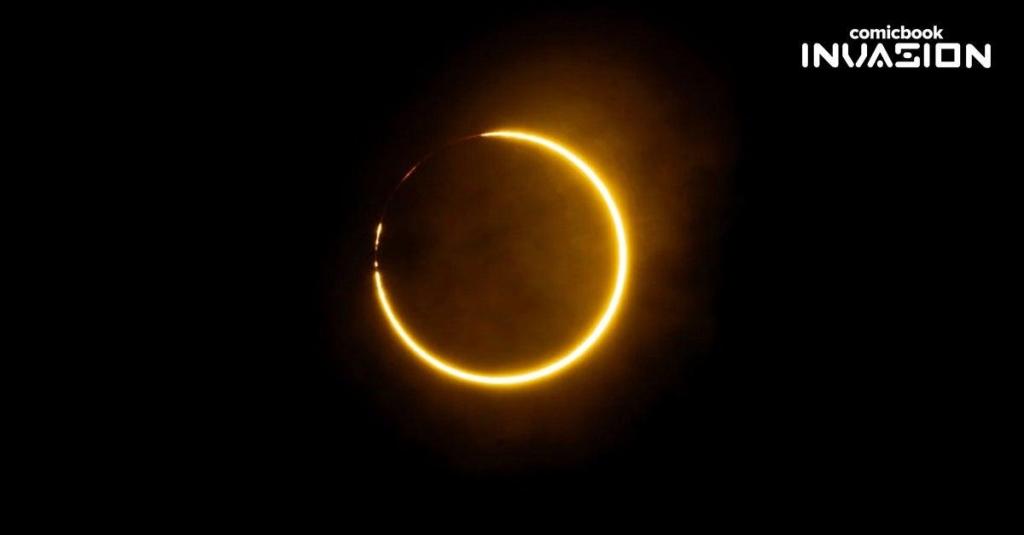As it turns out, May’s Super Flower Blood Moon was only the starting point for this summer’s major astronomical events. Come Thursday, June 10th, some people in the United States will be able to catch a glimpse of a rare “Ring of Fire” solar eclipse. Unlike the total eclipse of last summer, the moon won’t fully cover the sun as it passes. As such, the edge of the star can still be visible for a moment’s time, creating what star-gazers call a ring of fire effect.
Videos by ComicBook.com
“As the pair rises higher in the sky, the silhouette of the Moon will gradually shift off the sun to the lower left, allowing more of the Sun to show until the eclipse ends,” NASA says of the event.
The eclipse begins at 6:53 a.m. Eastern on June 10th and will be completely visible to the East in eastern parts of Canada, Greenland, and Siberia. It will be partially visible to the rest of northeastern North America — including states in New England, Northern Europe, and northern Asia.
Unlike the blood moon last month, it is absolutely essential to wear special solar eclipse glasses while looking at the Ring of Fire solar eclipse as health officials warn looking directly at the sun can severely damage your eyes.
According to Earthsky, the eclipse will last a maximum of three minutes and 51 seconds. The total amount of time quickly decreases the further west you go in the United States. The western-most space where an eclipse will be available follows a bath from North Dakota to Illinois, the eastern half of Tennessee, and the northeastern-most chunk of Georgia.
“From Savannah, Georgia, the eclipse magnitude at sunrise is only 0.028 (2.8%). The eclipse shrinks thereafter, lasting only 3 minutes and 24 seconds after sunrise,” EarthSky writes. “From Sioux Falls, South Dakota, the eclipse magnitude at sunrise is only 0.022 (2.2%). It ends one minute and 37 seconds after sunrise.”
Anyone west of that divide will be unable to see even a partial solar eclipse.
Cover photo by TPG/Getty Images









